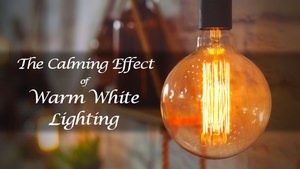Over 60% of households in the USA grow plants indoors. So, what do you need to know in order to maintain healthy plants indoors?

Today houseplants are a very popular fixture of the home for many people. Bringing plants inside is a fun way of enjoying nature year-round. This is especially true for those living in frigid climates such as the upper Midwest who live through 5 months of winter before spring breaks through.
Plants are also a fun tool to use in decorating. They instantly brighten a room with their cheerful colors. Accessorizing a space with plants creates a natural feel to the room.
While some plants can thrive on a few hours of natural sunlight streaming through a window many plants require more attention. This is where grow lights step into the picture.
Grow lights are designed to mimic natural sunlight, encouraging photosynthesis in plants causing them to grow. During the winter season these lights are specifically needed in order to keep plants happy and healthy.
So, what goes into picking the right grow light and installing it in your home? Read on as we explain 5 things you need to know about growing plants indoors.

What is a grow light?
A grow light is a type of light that is designed to copy the qualities of natural sunlight. A grow light converts watts to PAR. PAR, which stands for Photolytically Active Radiation, is the range of solar radiation that a plant can turn into photosynthesis which is necessary for plant growth.
Grow lights are special because they can be used to grow plants in a contained environment. While natural sunlight is the ideal method for plant health, grow lights do a great job of replacing the qualities that the sun gives to plants.
5 Things you need to know about growing plants in doors
#1-The Type of Light
When deciding which grow light to purchase it is important to know that there are four main types of grow bulbs: Incandescent, HID, Fluorescent, and LED. Each type is useful in different settings.
For years Incandescent grow lights were widely used to support plant health. However, as the lighting industry has grown these bulbs have been overtaken by better alternatives.
Florescent tubes are popular for growing a large number of seedlings. T5 type tubes are especially beneficial as they are long enough to spread the light evenly over a large area for maximum growth.
One drawback on fluorescents is that they don’t produce a lot of heat. Because of this they are only recommended for certain types of plants.
HID which stands for High Intensity discharge are another type of lamp used for growing lamps. They produce a substantial amount of heat which is ideal for some types of plants. However, because of their high heat discharge it is advised to keep the plant roughly 5 feet from the light source.
The newest member of the grow lamp category is the LED(Light Emitting Diode). They have quickly become the most popular grow light type on the market. They are versatile, easy to install and are great for plant growth.

#2-The color of light
The next step after picking the preferred type of light is the color of light that is being emitted. Depending on the plant there are certain colors of light that are better than others for plant growth.
The color temperature of a light is rated on the kelvin scale. The smaller the number the warmer in color the light will appear. Conversely, the higher the number the bluer the light will be.
Blue light is generally the best for plant growth, supporting structural health. Red wavelengths help flowering plants. A light that combines both of these colors is ideal.
While less helpful, warm wavelengths of light are beneficial when combined with blue or red light.
Full spectrum bulbs are another recommended option. They have a higher light quality that mimics natural sunlight hence are healthy for plants. For more information on full spectrum bulbs and specifically how they compare to daylight bulbs, see here.

#3-Where to place the light
While this will depend on what category of grow light you pick and the type of plant you are growing there are general rules that will help your plant flourish. As previously mentioned, HID lamps generate a lot of heat. As such they should be kept a safe distance of about 5 feet away so as not to scorch the plant or dry the soil too quickly.
For general houseplants the light should be about a foot away from the plant.
Any grow light should be placed as directly over the plant as possible so as to maximize even growth. If a light is placed at an angle to the plant the stem and leaves will naturally bend towards the light.

#4-How long to leave the light on
The number of hours to keep a grow light on will vary depending on the type of plant, light source, and the color of the light used. General houseplants should get 8-10 hours of grow light per day. It is helpful to think how much sunlight a plant would get if it were living outdoors and to then compare that sunlight with the type of grow light you are using to keep that plant healthy indoors.
#5-Maintaining plant health
The success of keeping plants healthy indoors depends a lot on the type of plant you have. While it will vary depending on the plant below are some general tips to keep your plant friend happy.
· Rotating the plant periodically under the grow light
· Implementing a grow light timer so that a light is never left on for too long
· Don’t over water. Less natural sunlight means less water
· Keep the soil healthy
Conclusion
Growing plants indoors is a fun way to bring nature into the home in a controlled way. Thankfully, there are multiple different types of grow light options ranging from entire grow light fixtures to a simple screw in bulb. As grow lights become more popular it is easier and easier to maintain healthy plants for a long period of time.






